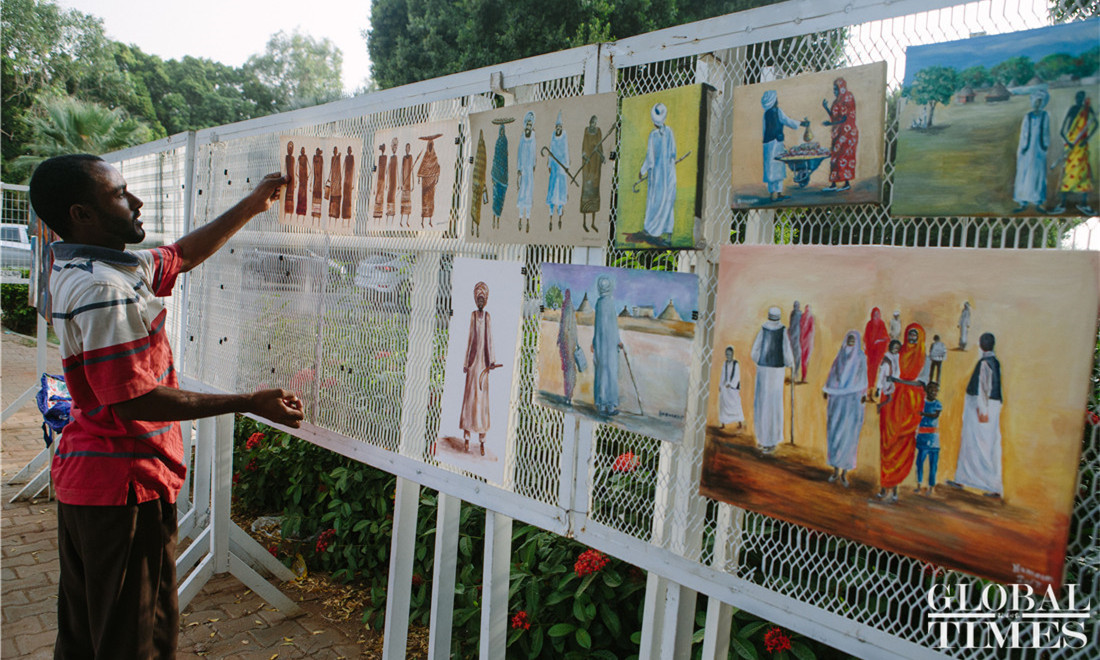Editor's Note:
A Global Times photographer seeks out connections between China and Sudan in daily scenes on the streets of Khartoum on September 23, 2017. Photos: Li Hao/GT
 People ride in the back of a pickup truck in Khartoum, Sudan. Pickups are popular in the country for their practical uses. Photo: Li Hao/GT
People ride in the back of a pickup truck in Khartoum, Sudan. Pickups are popular in the country for their practical uses. Photo: Li Hao/GT  Young people in Khartoum say “ni hao,” or hello in Chinese, to the Global Times photographer. Photo: Li Hao/GT
Young people in Khartoum say “ni hao,” or hello in Chinese, to the Global Times photographer. Photo: Li Hao/GT  A local man sells newspapers on a Khartoum street. Photo: Li Hao/GT
A local man sells newspapers on a Khartoum street. Photo: Li Hao/GT  A little girl dances in front of a mural at the National Museum of Sudan, Khartoum. Photo: Li Hao/GT
A little girl dances in front of a mural at the National Museum of Sudan, Khartoum. Photo: Li Hao/GT  A motorboat carrying two men moves on the White Nile in Khartoum, Sudan. Photo: Li Hao/GT
A motorboat carrying two men moves on the White Nile in Khartoum, Sudan. Photo: Li Hao/GT 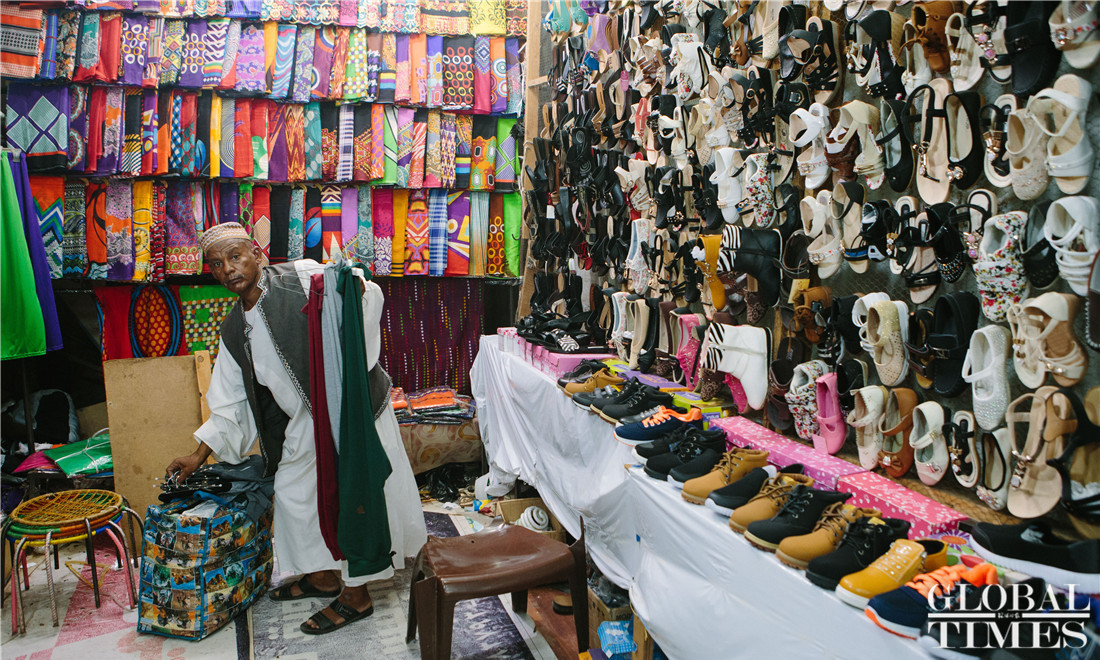 A vendor sells shoes at a market in Khartoum, Sudan. Most of the hats, clothes and shoes sold at the market are made in China. Photo: Li Hao/GT
A vendor sells shoes at a market in Khartoum, Sudan. Most of the hats, clothes and shoes sold at the market are made in China. Photo: Li Hao/GT 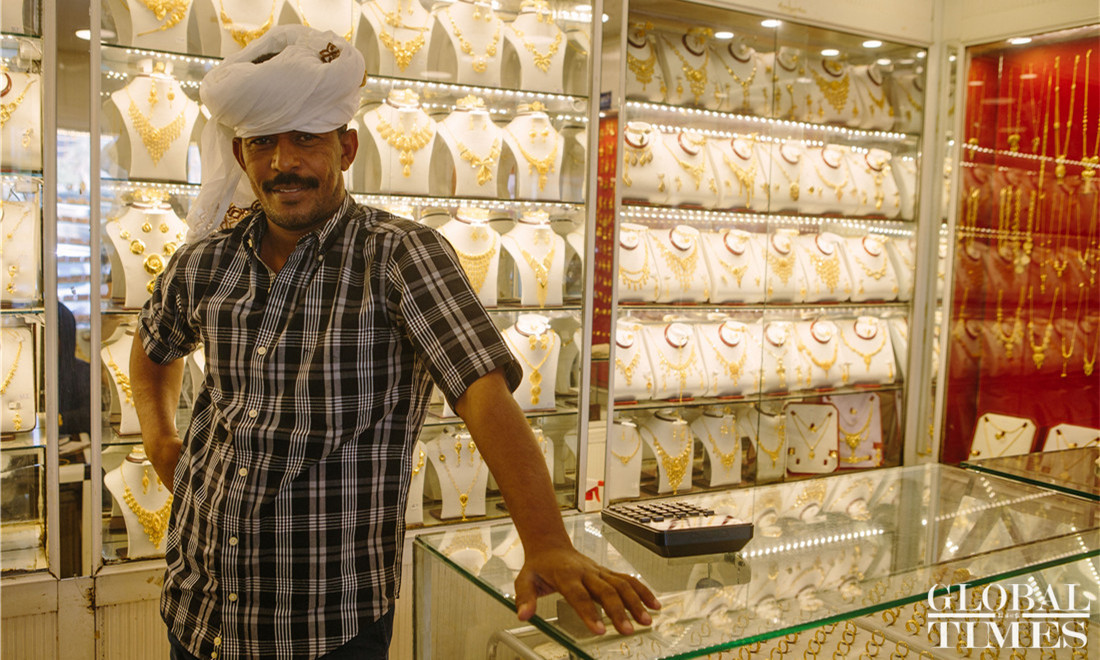 A jewelry shop owner poses at his counter at a market in Khartoum, Sudan. Photo: Li Hao/GT
A jewelry shop owner poses at his counter at a market in Khartoum, Sudan. Photo: Li Hao/GT 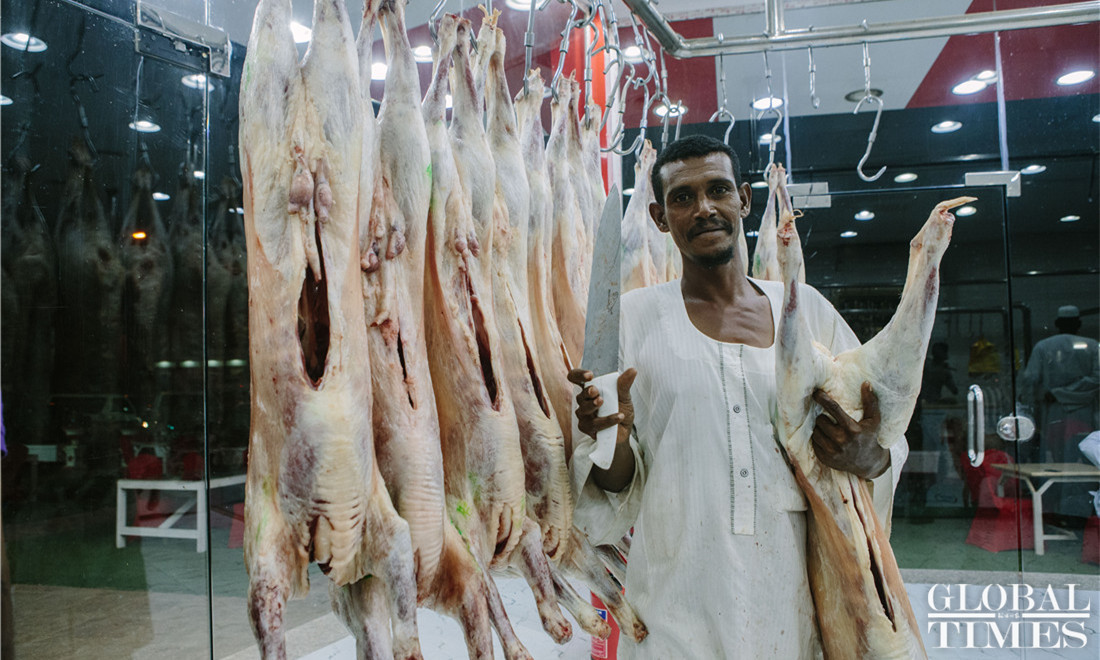 A butcher stands with several hanging sheep carcasses at a meat market of Sudan. Mutton and lamb are a main part of the Sudanese diet. Photo: Li Hao/GT
A butcher stands with several hanging sheep carcasses at a meat market of Sudan. Mutton and lamb are a main part of the Sudanese diet. Photo: Li Hao/GT 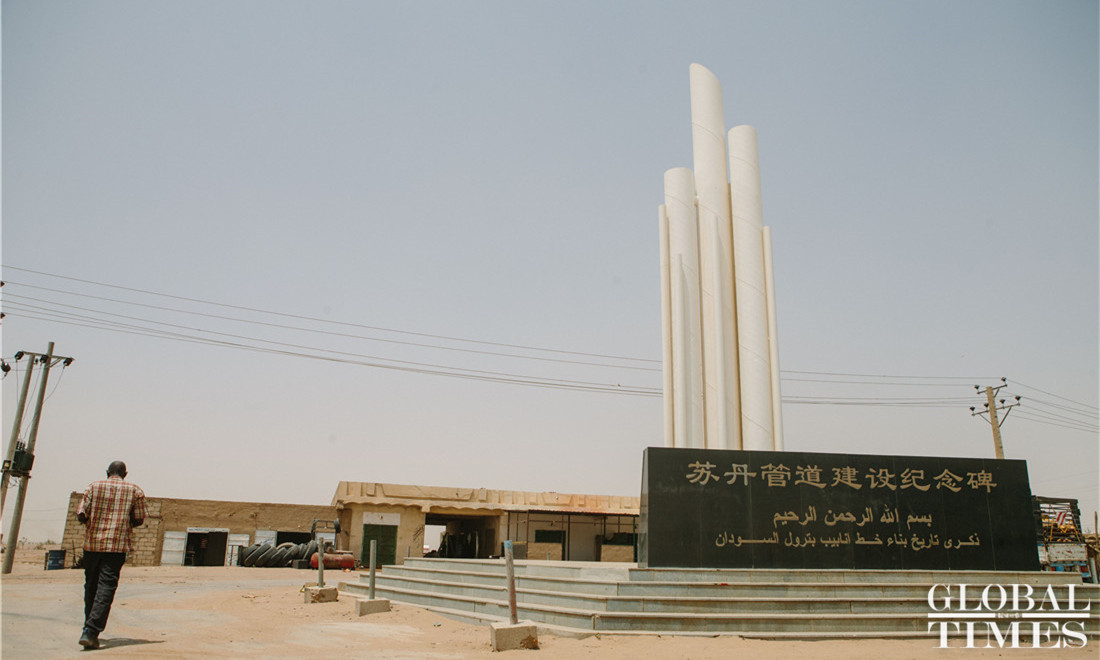 A man walks past the China-Sudan Oil Pipeline Monument in Khartoum, Sudan. The 1,506-kilometer-long oil pipeline across Sudan was completed on April 30, 1999, which was constructed by China Petroleum Pipeline Bureau and involved more than 2,000 Chinese workers. Photo: Li Hao/GT
A man walks past the China-Sudan Oil Pipeline Monument in Khartoum, Sudan. The 1,506-kilometer-long oil pipeline across Sudan was completed on April 30, 1999, which was constructed by China Petroleum Pipeline Bureau and involved more than 2,000 Chinese workers. Photo: Li Hao/GT









